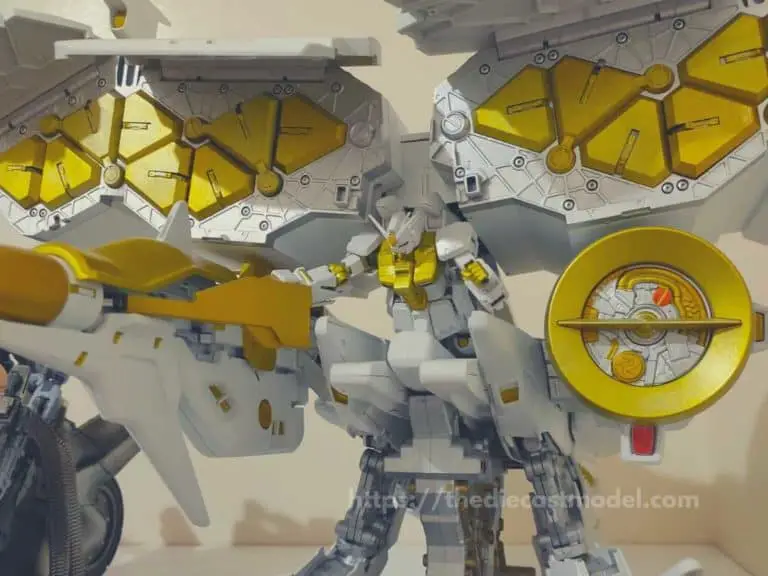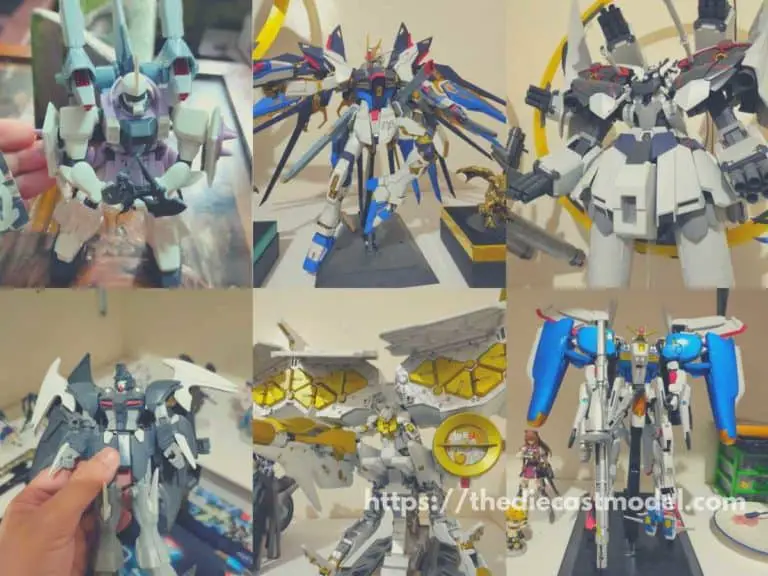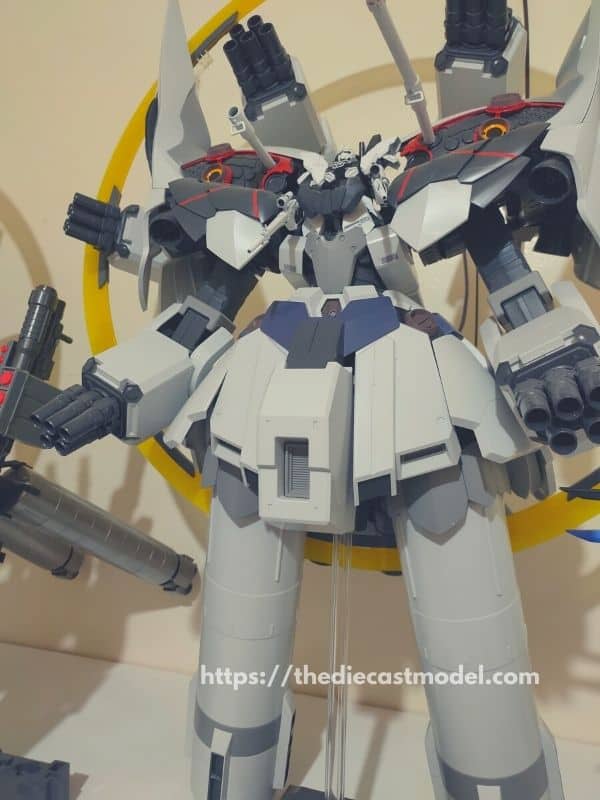Is It Possible to Run Analogue Trains on Digital and Vice Versa?
Sometimes, you might not have enough decoders and think about running an analog train on digital command. This is also something I’ve thought about. Upon researching the topic, I got some helpful information that I would like to share with my blog’s readers. So, is it possible to run analogue trains on digital?
It is possible to run analogue trains on digital. However, running analogue trains on digital can strain the engine since it uses a different amount of power and type of power source. This causes the train engine’s life not to last long. However, most analogue trains are DCC-ready and can easily be converted to digital by adding a decoder.
This post will discuss the principle behind digital command control and why you should not use an analogue train in it. Furthermore, we will reverse the scenario and see if you can use a digital train on analogue. This gives you a complete understanding of the principles between analog and digital control.
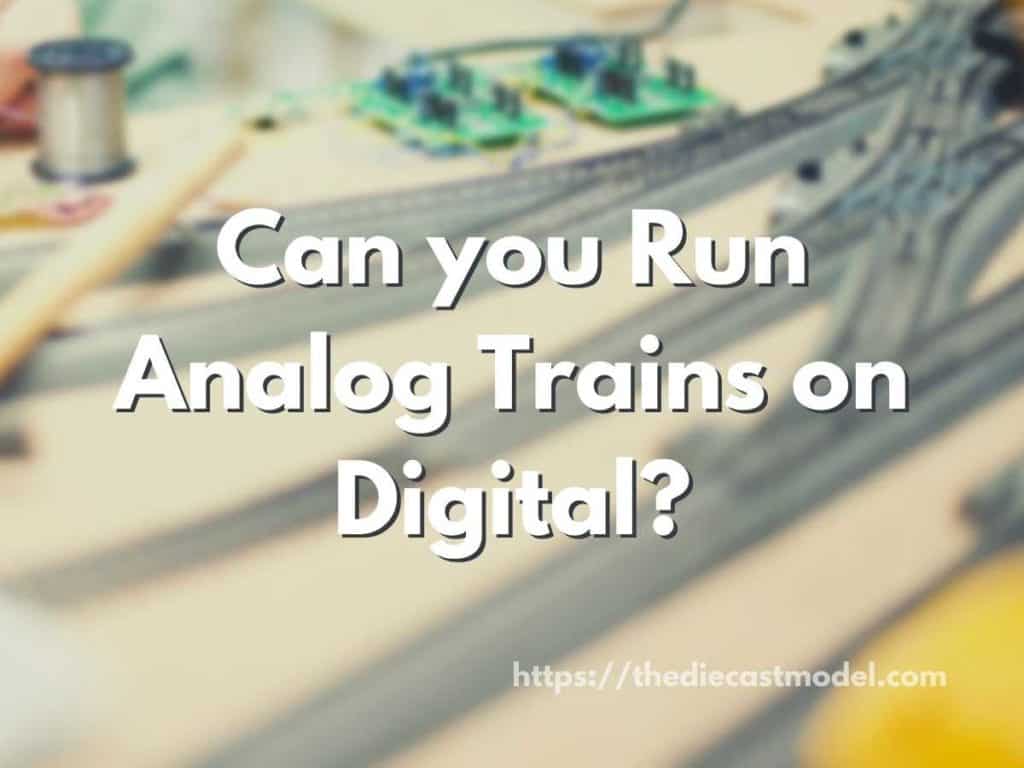
Can you run analogue trains on digital?
You can run analog trains on digital. However, it is not recommended since it would cause strain on your model train engine. This is because digital controllers use AC power which is different from the standard power the engine uses, which is DC.
First, let’s understand that analogue and digital trains have other names.
Analog trains are also called DC since it uses direct current. This is important.
Digital trains are what others call DCC or digital command control, which uses AC power.
In analog or DC trains, the power they use is DC (Direct Current) power which is constant. Thus, it is direct current.
Digital trains use AC (Alternating Current), whose frequency constantly changes.
Thus, not all forms of electricity are the same. For example, analog uses direct current, which digital uses alternating current.
However, both can power the train’s engine even if they are different.
You can run a DC locomotive on a DCC track. However, you will not have control over the train’s speed since it will always go at maximum speed. Furthermore, this strains the engine since it uses a different power type.
Knowing that DCC uses AC is enough not to use a DC locomotive on a DCC track. However, why do analog trains go at maximum speed when used on a digital track?
This is because both the power type and voltage are different between analog and digital trains.
First, let’s talk about analog trains.
Analog trains go for 0-12 volts of DC power. The more voltage, the faster the train goes. The simplicity of DC makes it a good and cheap way to start train modeling.
However, this is also the problem when an analog train is placed in a digital track.
Digital trains usually have a 16 volts power supply, while some can reach up to 22 volts.
This means an analog train made for 12 volts will go full throttle with 16 to 22 volts of current.
Furthermore, since analog trains use up to 12 volts, going 16 to 22 volts will harm the engine causing it to overheat and break.
Thus, when you try to run an analog train on a digital track, it will run at its maximum speed. However, since it will be running at an overdrive, it will cause overheating and strain the engine.
This is different from a digital train, where they have a decoder inside the engine, which controls the amount of electricity it gives to the engine.
That’s why even if digital trains go for a maximum of 22 volts, it won’t damage their system, thanks to the decoder.
But why the extra voltage if the engine can’t handle more than 12 volts of power?
The extra voltage is used for the accessories that analog trains couldn’t have, such as the train’s sound system and smoke.
Thus, the decoder allocates a specific power to the engine and uses the remaining for the accessories.
Analog trains don’t usually support accessories such as sounds, bells, and smoke except if it has AC ports.
Now that you know that analog trains aren’t recommended to be used on digital trains, you might wonder if these DC trains can be converted to digital to use on your layout. That’s the topic for the next section.
Furthermore, we will also briefly discuss how digital trains work.
Can DC trains be converted to DCC?
DC trains can be converted to DCC by adding decoders. However, the difficulty of adding decoders vary depending on the type of DC train. DCC-ready trains can easily be turned into DCC since it has a socket for decoders. However, non-DCC-ready trains need soldering to turn into DCC.
Generally speaking, all DC trains can be turned to DCC by adding a decoder.
That includes any brand like Hornby.
Any Hornby train can be converted to digital. However, some old Hornby trains aren’t DCC-ready, requiring some soldering to turn them to DCC. Most of the newer Hornby trains are DCC-ready, making it easier to install a decoder.
Hornby is only an example. In fact, you can turn almost all model train brands to DCC by adding a decoder.
Did you know that some Hornby models are valuable and are sold for thousands of dollars? To know more about valuable Hornby trains, feel free to check this post: Are Hornby Trains Valuable?
What’s great is thanks to the NMRA or the National Model Railroading Association, decoders are standardized and compatible with any train, no matter the brand.
That means you can usually put whatever brand of decoder you want on your model train.
However, take note of these three things.
One is that there are DCC-fitted trains. This means there is already a decoder inside the model train.
Thus, please do not buy a decoder on DCC-fitted trains since it already has one inside. The only thing you need to do is connect the decoder to the DCC controller.
Two is that there are DCC-ready trains. DCC-ready trains have a socket for the decoder, which makes installing a decoder easy. However, since it only has a socket, you must buy a decoder separately.
Thus, find out first if your model is DCC-fitted or DCC-friendly. This will save you some money since decoders usually go for $20 each.
Last is that old models, particularly those made more than 2 decades ago, might not be DCC-ready or DCC-fitted. These models are the hardest ones to convert to DC.
If the model train isn’t DCC-ready, it can still be converted to DCC. However, it needs soldering since you need to install the decoder inside the engine.
Adding decoders by soldering can break the engine and is not recommended, especially if you don’t know how to do it. It is better to hire someone experienced to do it for you to prevent any unwanted breakage.
Now, you might wonder what does the decoder does. Here is an illustration of how the decoder works.
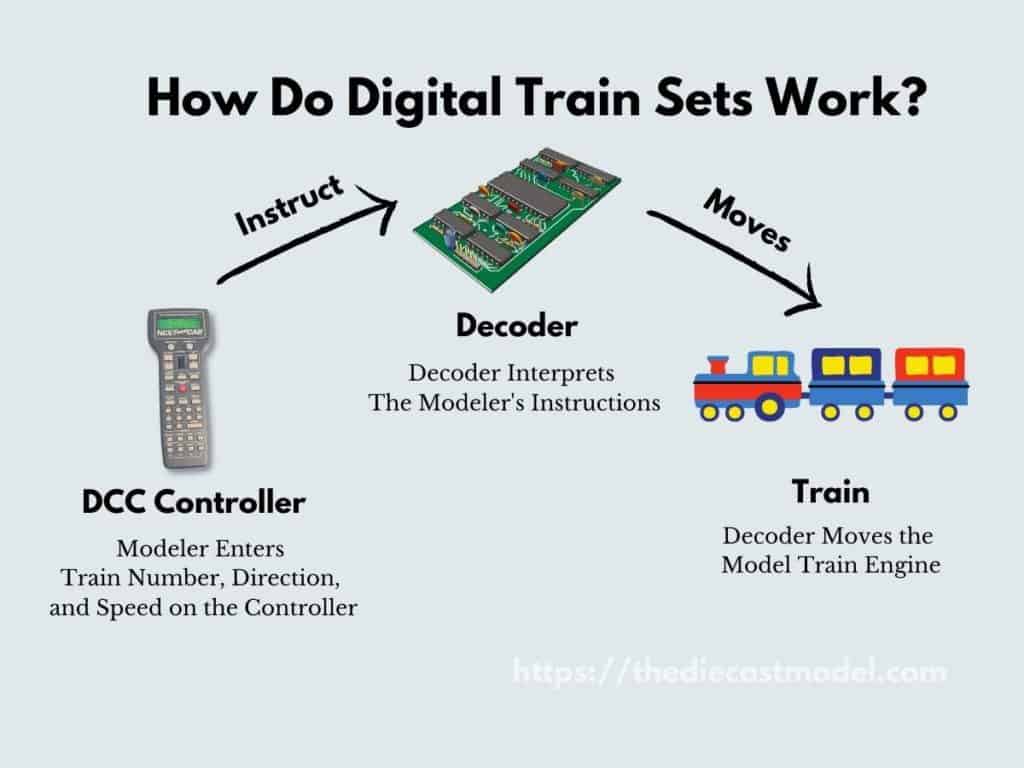
To make it simple, a decoder is a tiny chip or computer that is placed on the train’s engine to turn it into a digital train.
As the name implies, the decoder decodes and turns the modeler’s instruction into action.
It’s the one that manages the current to power the train’s engine and accessories.
In short, you are turning your train into a tiny computer so you can easily manage them.
For a more detailed explanation of how decoders work, please check my post about digital trains here: How do digital model trains work?
Right now, you have a complete understanding of why DC trains shouldn’t go in DCC tracks and if you can convert DC trains to DCC.
We will now switch the scenario and see if DCC trains can run on analog.
Can DCC Ready trains run on analogue?
DCC-ready trains can run on analogue because DCC-ready is DC in nature. DCC-ready trains can only become DCC if a decoder is added. DCC-ready trains with decoders can also run on analogue since manufacturers set the decoders to run on DC except if controlled with a DCC controller.
First, take note that DCC-ready trains are trains that don’t have a decoder. This means they function as DC.
If DCC-ready trains are used on DC, they will run like a DC train.
Remember that DCC-ready trains only become DCC when a decoder was installed.
Now, let’s switch. We talked about how analog trains aren’t recommended for digital tracks. How about digital trains on analog tracks?
The good news is you can use digital trains on analog tracks. Even if they have a decoder, manufacturers set the decoder to function as an analog train if the train is on an analog track.
While using an analog train on a digital track isn’t recommended since it can destroy the engine, you can use a digital train on analog tracks with no problem.
In short, analog trains on digital track is not recommended, but digital train on analog track is perfectly fine.
What’s next? For a detailed guide on the difference between DC(analog) and DCC(digital), feel free to check my post here: DC vs. DCC: What is their difference?

